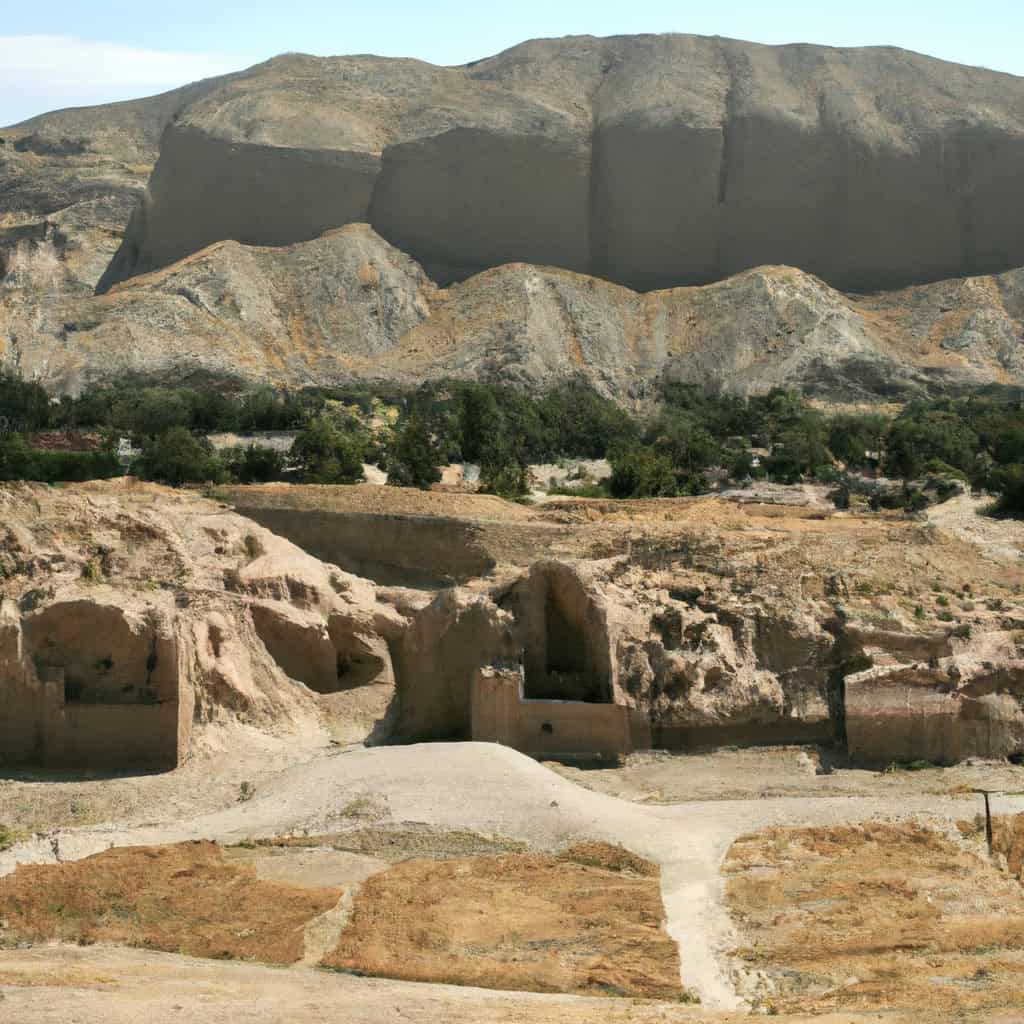Hadda Archaeological Site in Jalalabad, is one of many fascinating sites that both foreign visitors and local tourists can explore while they visit Afghanistan and exploring Nangarhar Province. Nestled in the picturesque landscape of Jalalabad, the historic city of Hadda is a portal into the past that unveils deep insights into Afghanistan’s rich cultural and religious history. It was once a flourishing gathering ground for seekers of knowledge and spirituality, becoming a crossroads and melting pot of various cultures over centuries.
Known for its colossal Buddhist monastic complexes and stupas, the Hadda Archaeological Site narrates the fascinating story of Hellenistic, Indian, and Chinese influences on Afghan culture. The immense stucco and stone statues of Buddha and Bodhisattvas found here are vivid remnant testimonies to the vibrant Buddhist culture that once flourished in this region.
Hadda Archaeological Site Most Important Events
- The Rise of Gandhara Art: During the first to the seventh century AD, Hadda was at its zenith. The amalgamation of Indian, Greek, and Persian aesthetics gave rise to the unique Gandhara Art style.
- The Islamic Conquest: The arrival of Islamic forces in late 7th century AD marked a pivotal moment for Hadda and played a critical role in shifting the cultural and religious landscape of the region.
- The Archaeological Excavations: Excavations initiated by French archaeologists from the 1930s to 1970s reintroduced this forgotten site to the world, enhancing awareness about Afghanistan’s rich heritage.
History of Hadda Archaeological Site in Jalalabad
The Hadda Archaeological Site dates back to over 2000 years ago when Buddhism was flourishing under the Mauryan rule. It rose to prominence in the first century AD, when the Kushan founded an empire that embraced parts of modern-day Afghanistan, Pakistan, and India. The Kushans were great patrons of Buddhism, and they built vast monastic complexes and stupas as a representation of the power of the religion. The remnants of these Buddhist edifices can still be seen in Hadda.
With the end of the Kushan Empire in the mid-3rd century, the Buddhist tradition continued for centuries until the onset of Islamic rule in the late 7th century. This transition marked a significant turn in Hadda’s history.
Archaeological expeditions initiated in the 1830s unveiled the extensive remains of Hadda, and extensive excavations in the later part of the 20th century uncovered hundreds of Buddha and Bodhisattva statues, many of which are now housed in museums worldwide.
Why It’s Important to Afghan History
The Hadda Archaeological Site holds significant historical importance for Afghanistan as it reveals the multicultural influences that molded Afghan history. Hadda was a hub for the flow of ideas, art, and trade from different regions like India, Greece, and China, postulating the flourishing economic prospect.
Furthermore, Hadda highlights the intersecting journey of Buddhism and Islam in Afghanistan’s historical narrative. The site is an homage to the tolerant era when Buddhist and Islamic cultures coexisted, shaping the cultural and religious landscape of the region.
Why to Visit Hadda Archaeological Site
A visit to the Hadda Archaeological Site presents a unique opportunity to delve into the rich historical tapestry behind the monuments and sculptures. The UNESCO world heritage site mesmerizes visitors with its grandeur and the architectural brilliance of bygone eras.
The sprawling clusters of stupas set against breathtaking landscapes provide a delightful photographic opportunity. Embedded in the midst of nature, Hadda offers a serene atmosphere that spiritual seekers and historians alike would cherish.
- The vast monastic complexes with intricate carvings.
- The extraordinary assortment of Buddhist sculptures.
- The picturesque vistas surrounding the site.
- The calming ambiance that resonates with Buddhist teachings.
- The museums exhibiting the recovered artifacts from the site.
Located about 80 kilometers from the city of Jalalabad, the site can be accessed via road. Though the site is open to tourists all year round, the spring season, from April to June, is an ideal time to visit due to pleasant weather conditions.
Cultural & Tourist Significance
Hadda’s scientific, historic, and aesthetic values make it a remarkable cultural heritage site. Its massive Buddha and Bodhisattva statues are representative of the Gandhara art style, offering invaluable insights into ancient artistic traditions. Hadda is an essential reference point for scholars interested in the cultural exchange that happened along Silk Route.
For tourists, Hadda holds immense touristic potential. Besides the historical importance, Hadda’s serene environment and picturesque surroundings make it an enriching visit. The opportunity to delve deep into cultural antiquity alongside the idyllic setting attracts history enthusiasts and nature lovers alike.
Furthermore, local communities around the Hadda site also benefit from tourism, which brings economic opportunities and plays a vital role in the preservation and promotion of this ancient site.
Interesting Facts
It is believed that the site was included in the trade route linking China with India in ancient times, enhancing its cultural diversity. Also, the stucco technique prevalent at Hadda is said to have eventually inspired the creation of the colossal Bamiyan Buddhas in Afghanistan.
Many artifacts found in Hadda display Greek influences, conferring the power and extent of the Hellenistic legacy. One fascinating lore indicates that the local residents regarded Hadda as a sacrosanct site where supernatural beings resided, well before the archaeological significance was brought to light.
As a testament to Afghanistan’s glorious past, the remnants of Hadda continue to intrigue travelers, historians, and archaeologists to this day.


